I finished dyeing my first “cube” yesterday. This one covered light to medium shades of the color combination sun yellow/fuchsia/turquoise. It includes every possible combination of these concentrations: 0, 0.06%, 0.12%, 0.25%, and 0.5%, in all three colors.
Here’s what the first level looks like:
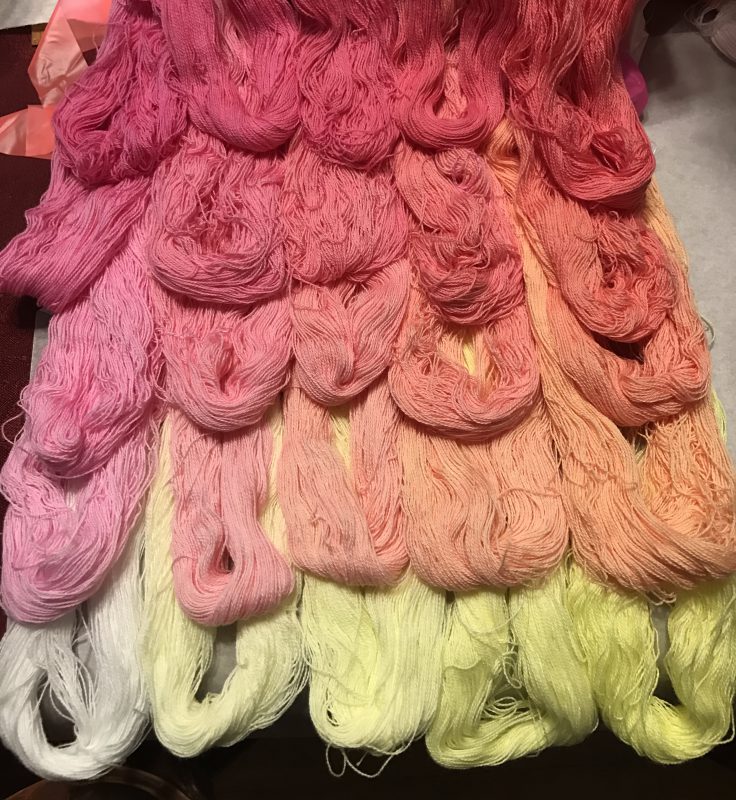
This “level” of the cube is all mixes of yellow/fuchsia/turquoise with 0% turquoise in the mix – i.e. all combinations of sun yellow and fuchsia at the five dye concentrations (0, 0.06%, 0.12%, 0.25%, 0.5%). Each row has a single concentration of fuchsia, starting from 0% at the bottom and going to 0.5%. Each column has a single concentration of yellow, starting from 0% in the leftmost column and going to 0.5% in the right-hand column.
Here’s an annotated example:
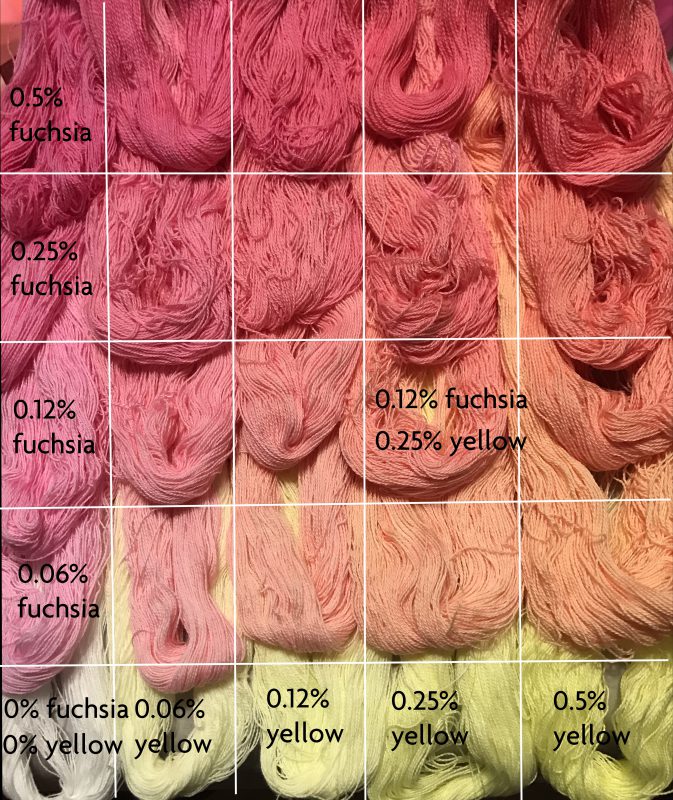
Each row/column of this set of samples (except 0.06%, obviously) doubles the amount of dye in the solution. I find this interesting because the visual effect is a linear progression (that is, the colors look about equally far apart from each other), but the dye amount is increasing exponentially. So dyes are very much nonlinear in their effect on fiber.
The second thing that interests me is the big color jump between 0 and 0.06% in the fuchsia. 0% is dead white, but even at 0.06%, the fuchsia is a light-to-medium pink. The jump is highly visible across that entire row – the bottom row is shades of pure yellow, and suddenly – bam! – the next row is clearly orange. If I want a smooth color progression I’d have to insert an 0.03% row and maybe even an 0.015% one between the first and second rows. That is an amazingly small amount of dye to have such impact.
The third interesting thing is that the fuchsia is a stronger mixing color than the sun yellow. If you look at the diagonal from bottom left to top right, where the amounts of dye are equal, you can see that the result leans strongly towards fuchsia – and this becomes more pronounced as the concentration of fuchsia goes up. In fact, you don’t really get orange unless the amount of sun yellow is 4-8 times greater than the amount of fuchsia. This fits with my experience – it takes very little red to turn a yellow dye bath orange – but it’s interesting to see it play out in a systematic way.
The next level of the cube shows what happens when you add 0.06% turquoise to the mix. The rows and columns have the same amount of fuchsia and yellow as in the first level, but all the skeins are dyed using 0.06% turquoise.
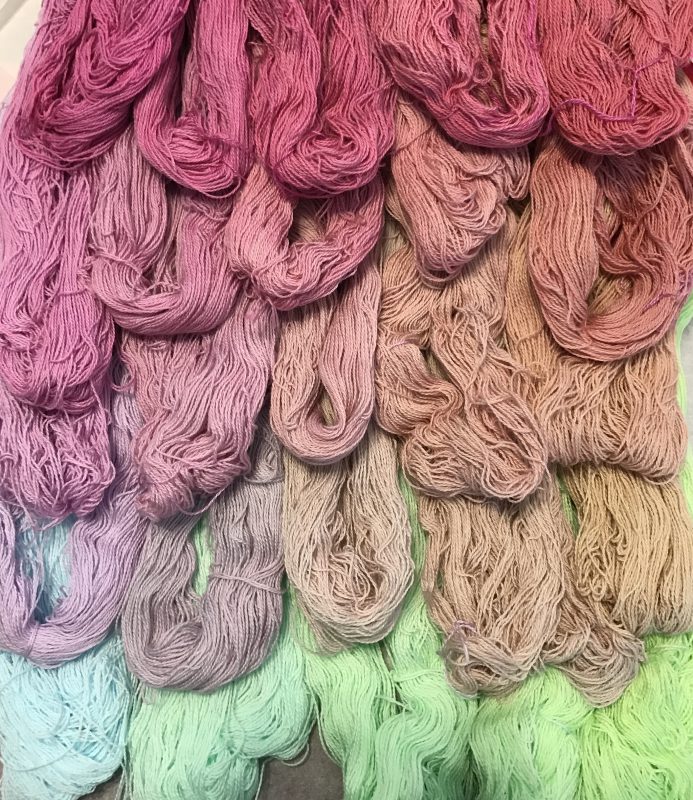
As you can see, there’s a strong and immediate change from yellow to green, though not as strong (I think) as the change from 0 to 0.06% in fuchsia. This suggests that turquoise is stronger in mixes than yellow, but not as strong as fuchsia. Also, neutral colors are starting to appear – there’s a gray (leaning towards purple) in the intersection of the second row and second column.
Here’s level 3, with 0.12% turquoise:
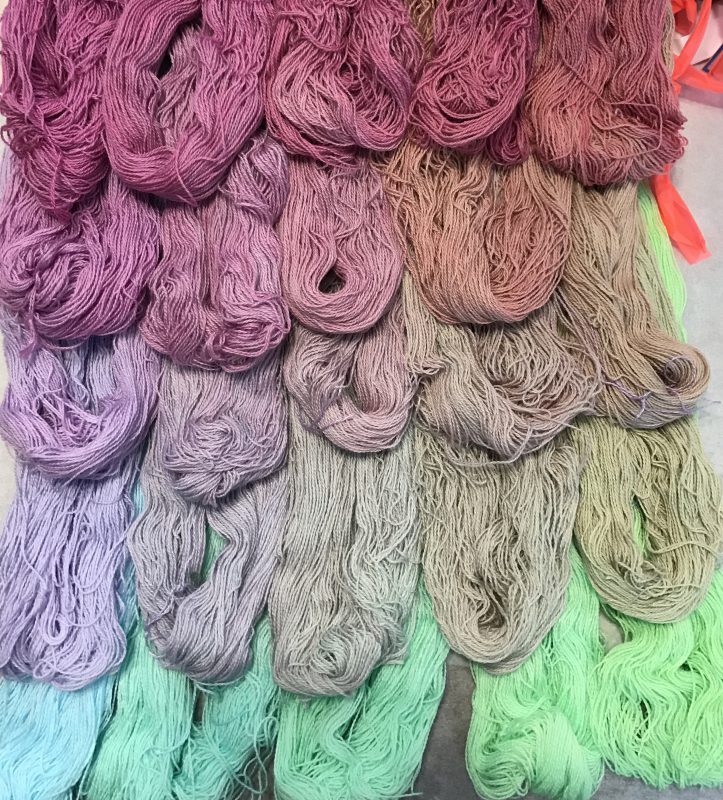
The colors have shifted noticeably towards blue, but the (now slightly cooler) gray remains in the second row/second column, rather than moving towards the top right, as you’d expect. The fact that you don’t find a good gray in the third column shows that the fuchsia is much stronger than either the turquoise or the sun yellow.
Here’s what it looks like on Level 4, 0.25% turquoise:
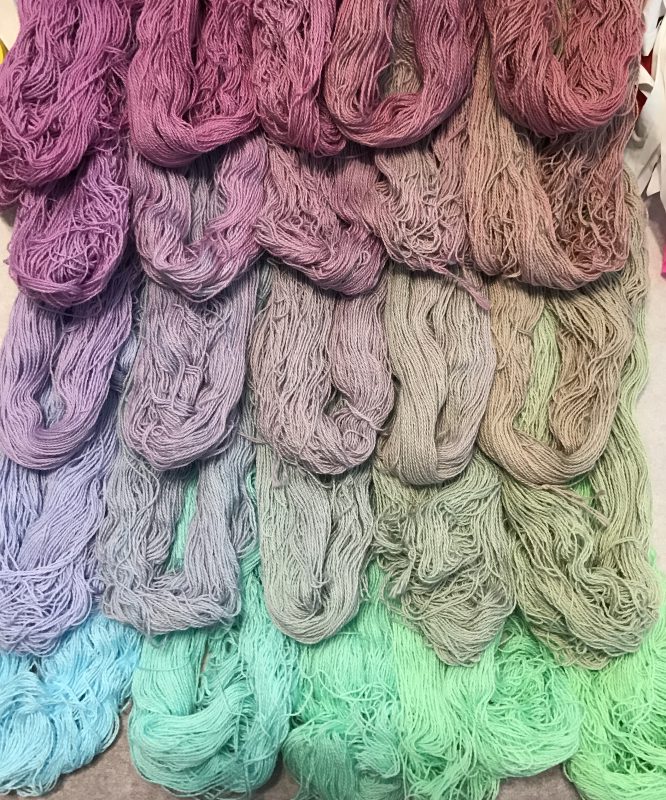
Astonishingly, the gray is still in the second row/second column.
And here’s how it looks at 0.5% turquoise:
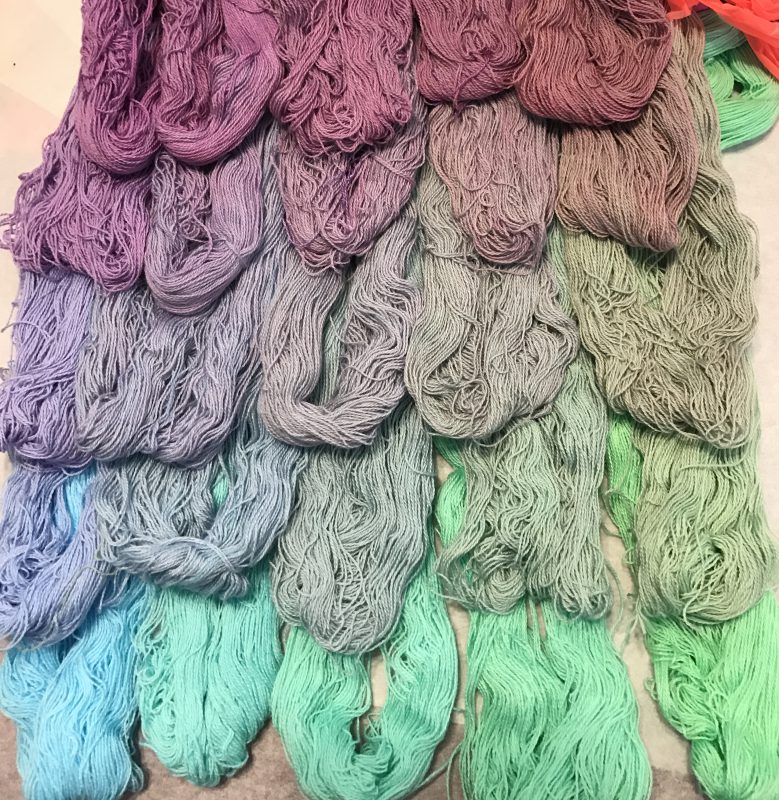
Now the grays are starting to shift to the next level up, though the gray in the third row/third column still looks distinctly pink.
Another interesting thing is that, at a casual glance, the adjacent levels of the cube are the same color. But in reality they are progressing towards a colder and bluer version, which is more obvious if you put non-adjacent levels together. To illustrate this, here is Level 2 (0.06% turquoise again. If you look from it to the above photo of Level 5 (0.50% turquoise), you can see the difference distinctly.

And that’s it for today! I have the sun yellow/fuchsia/turquoise dark colors dyed and in the rinse bucket now…I’ll post those once I have them done and dry, probably tomorrow.
It’s been fascinating looking at these 125 samples, and I’ve already learned a lot. I can’t wait to see the next batch!

good job
I love watching these progressions…..
This is fascinating. Thanks for the visual. This is the way I would do the dyeing because I’m a scientist but since I’m not trying to recreate a color I usually do what I’m doing tomorrow. I will dye fiber three colors and start blending the red, yellow and blue to get a range of colors to spin.
That is amazing–and impressive! How long did it take to dye all 125 samples?
Not as long as you might think – I only had to do 15 dyebaths (one for each color/concentration), and I discovered I could do 4 dyebaths at once, so it only took four sessions. That said, the bulk of the time is actually in prepping the skeins – each skein has to get a second skein tie, then a “bracelet” of flagging tape for lifting/lowering the skein, labeled with the color and concentration of the dyebath. The bracelets are color-coded so you can see at a glance which colors have been used.
Interesting results and somewhat different than I get with lanaset dyes at similar percentages. Note I exclude Dharma’s lanaset dyes as they are very different in both price and appearance. Different brands of red and other hues act/look differently. Really looking forward to seeing the whole series. Great study!!
Whoops I meant to include the word acid dye and dyed on wool rather than cotton.
So intriguing. I love this whole exercise.